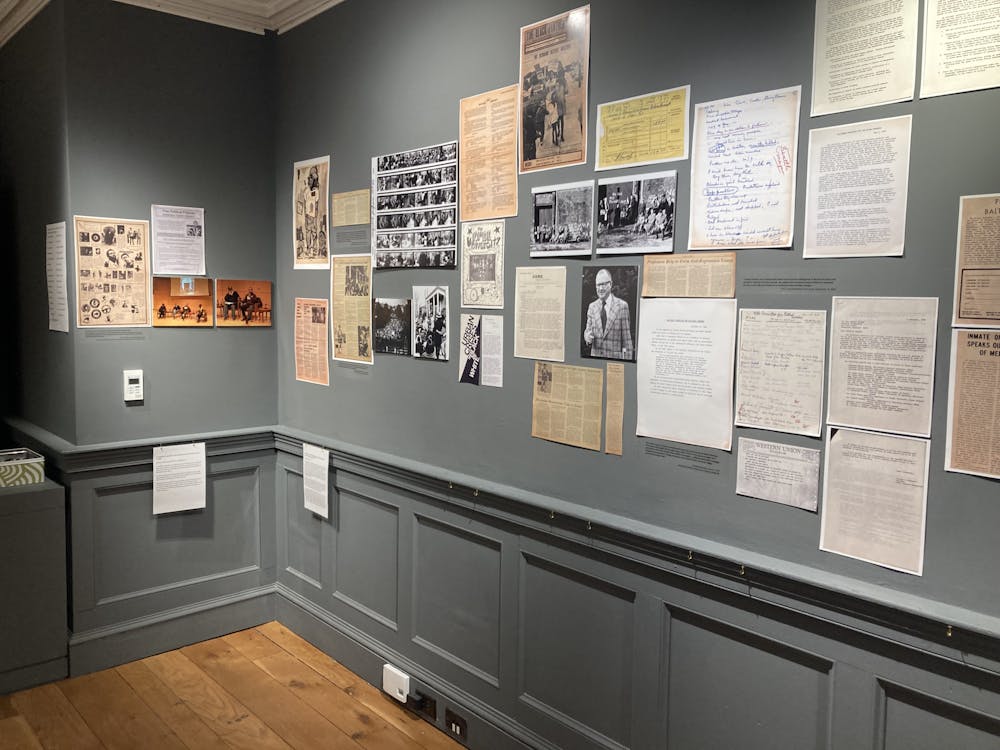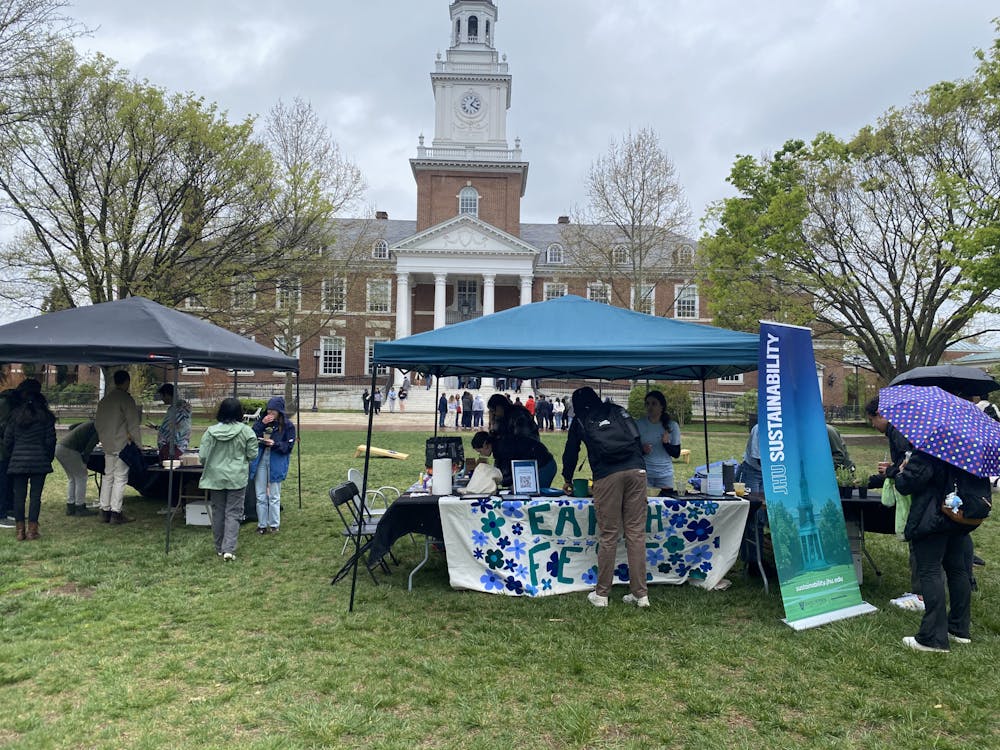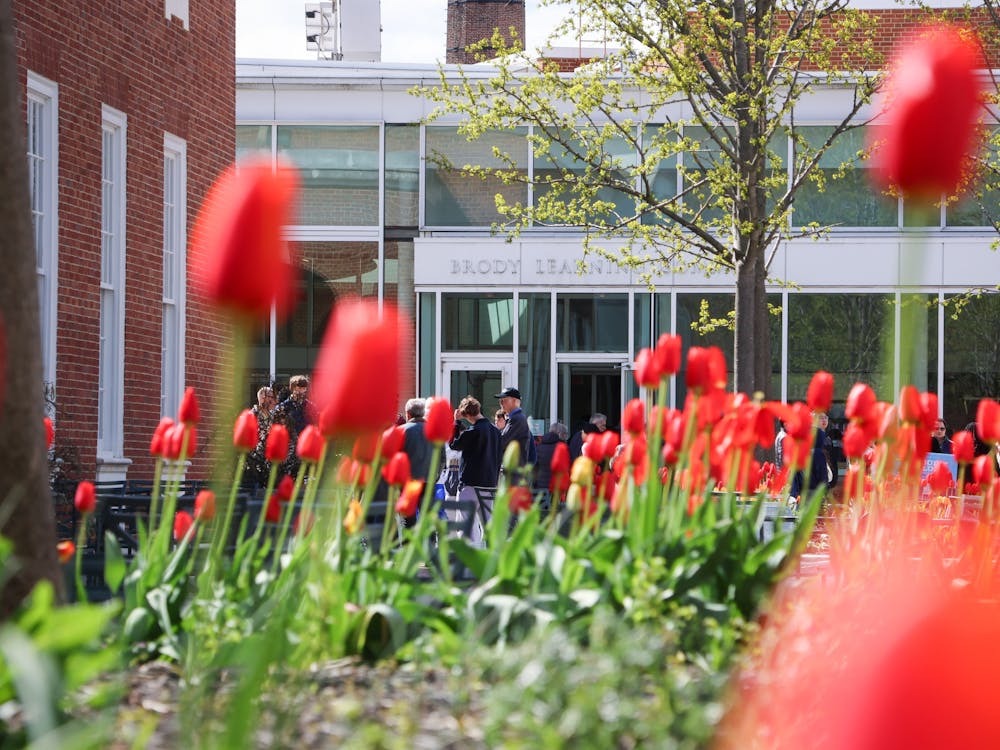In recent years, many students from colleges near Hopkins have come to Charles Village for its social scene, prompted by stringent rules regarding alcohol use at their own schools, a lack of social resources near their campuses and the accessibility of transit in Baltimore.
“I can definitely confirm that on many weekends, we are inundated with Loyola and Towson students,” Carrie Bennett, who retired from the position of Student-Community Liaison at Hopkins in August, said. “Over the course of any given night, you’re adding anywhere from a couple hundred to a thousand extra bodies.”
The recent influx of non-Hopkins students to Hopkins fraternities and Charles Village bars frequented by Hopkins students has prompted concerns over safety. This past September has seen a handful of related incidents. On Sept. 19, the Baltimore City Fire Department arrived at Maxie’s Pizza Bar & Grille due to safety concerns of a lit cigarette inside the bar.
Upon their arrival, they discovered an even more pressing concern: overcrowding. In addition to handling the fire code violation of the lit cigarette, the fire department also remained at Maxie’s to disperse the crowd. According to Baltimore City fire code, Maxie’s can safely accommodate 60 customers in its bar at capacity.
Employees of Charles Village bars have taken note of the increased presence of non-affiliates. Chil Tong, the owner and manager of Maxie’s Bar & Grille, claimed that the influx of non-Hopkins affiliates has had a positive effect on his business.
He does not find it fair to discriminate against a customer based on which school he or she attends, although he has made a conscious effort to integrate Hopkins students into the scene at the establishment as much as possible.
On Facebook, the Maxie’s page provides specials exclusively for Hopkins students, such as a “Hopkins Pregame” on Saturdays, offering $10 all-you-can-drink bracelets from 7 p.m. to 10 p.m.
“I advertised it on Facebook and nobody showed up,” Thong said. “And business is business.”
The nighttime presence of non-affiliates can be attributed to the location of the universities. Students at Loyola, for example, face several hindrances to their social life.
The Loyola campus, 1.2 miles north of Homewood on N. Charles Street, sits in the midst of the Keswick and Guilford neighborhoods, with few commercial enterprises within walking distances. Moreover, Loyola student policies concerning alcohol impose several penalties for offenses, including monetary fines and written warnings to the offender’s parents, according to the University’s “Community Standards” handbook.
“Loyola is a dry campus, and [Loyola] students therefore resort to off-campus bars as a source of entertainment,” Loyola sophomore Danielle Saitta said. “[We] usually go to Hopkins for a change of pace, a different party atmosphere or to spend time with a friend on campus.”
Bennett said utilities like the Baltimore Collegetown Shuttle, which links Goucher College, Towson University, Notre Dame University of Maryland, Loyola, Hopkins and the Maryland Institute College of Art, facilitate the flow of students from campus to campus.
“We make it very attractive for other students to come down to us,” Bennett said. “We’re in a safe area, our parties are well-managed, our bars are newer — Maxie’s is newer than almost anything on York Road, which is Loyola’s other alternative. I can see why they’re coming here, and I can also see why they’re more inclined to act out.”
She referred to a variety of incidents during her seven years as Student-Community Liaison in which students from nearby universities were complicit.
Last year, the brothers of Alpha Delta Phi (“WaWa”) threw a party following a victory of the Hopkins varsity football team. Between 1:30 a.m. and 2 a.m., Bennett said, members of the Towson football team arrived at the fraternity house on N. Charles Street.After members of the fraternity turned them away from the upper floors of the house — a space generally off-limits during parties — the visitors from Towson broke windows and beer bottles. When confronted by members of the fraternity, they turned violent.
“It was three WaWa brothers versus ten Towson football players,” Bennett said. “There were some rather serious injuries. A couple of concussions, a lot of blood. The Baltimore police were involved — they arrested four or so members of the Towson football team.”
“There are two sides to the story, and most people don’t know the facts. The Towson kids definitely suffered more — a few of them went to jail for a few nights,” sophomore WaWa brother Sean said. “But overall I’d say that I don’t love them here. Maxie’s is definitely a Loyola bar now.”
So far this semester, there has been no record of events of this severity. Bennett noted that the tendency of non-affiliates to act out is as logical as their presence.
“The further you get away from your own territory, the less you feel responsible for your behavior. ‘Oh, this isn’t our school, this isn’t our problem,’ so you might be inclined to act out a bit more.”
For campus security officials, the nighttime increase of pedestrian traffic imposes more responsibility.
“If a Loyola student were to be robbed in Charles Village, what’s the difference between a Loyola student and a Hopkins student? They were still robbed. And it’s more work for us,” Bennett said.
Independent of affiliation, however, the University expects all members of the Hopkins community or those on Hopkins property to abide by certain standards.
“Campus Safety and Security expects all individuals, regardless of the institution they attend, to act in a manner which is law-abiding and respectful to others and the neighborhood,” Lieutenant Mark Long of Campus Safety & Security wrote in an email to The News-Letter.
Many Hopkins students dislike the influx students from other universities because it takes away from the Hopkins-centric atmosphere of neighborhood institutions.
“Maxie’s is predominantly a Towson and Loyola bar now, and PJ’s is getting worse,” sophomore Anke Ehlert said. “I think it definitely drives Hopkins people away from them. Frats are a little different, because you know the brothers and have a reason to stay, but at bars, people want somewhere else to go.”
Additionally, the overabundance of non-Hopkins students changes the dynamics of nights out.
“I hate it when Towson and Loyola kids come to Hopkins,” sophomore Lauren Soll said. “They always crowd our bars and make them so much more unpleasant. I don’t go out to meet kids from other schools; I go out to hang out with my friends and meet other Hopkins people. I’ve stopped going to Maxie’s a lot just because there are usually a ton of Towson and Loyola people there.”















Please note All comments are eligible for publication in The News-Letter.